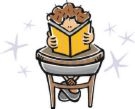
How would you like to go to the grocery store or the gynecologist or your graduation wearing a $37,000 diamond necklace? Would it be fun? Would it be shocking? Would it change your life?
In Cheryl Jarvis' book, The Necklace, Jonell McClain convinces 11 other women to band together with her to bid on a $37,000 diamond tennis necklace. (The 13th - and most reluctant - member is the jeweler's wife.) They hold regular meetings, they set up guidelines for sharing the necklace (everyone gets it for a month), they talk about where the necklace has been and what they've done while wearing it - everything from trips to the gynecologist to sky diving. There are rules about when you must have the necklace (if you are going to Paris) and what you must do while you have it (you must make love wearing only the diamonds, which is how one woman convinces her husband to sign off on the project). The women are very different from each other, they have different reasons for getting involved, but they all find it a novel and exciting experience and they take different things away from it.
Jonell, an ex-hippie, wants to make the necklace an experiment in group ownership. She wants the women to get involved together in social and political movements and she is for some reason surprised to find that not everyone shares her politics. Maggie is an adventurer and her first big adventure with the necklace is to wear it sky diving. When the other women find out that she called a tv station and they were on-hand to film her jump, they are not a bit happy. Others are successful career women and use the necklace (which the group named "Jewelia") to reconnect with women friends.
The book is an interesting read, although I sometimes felt a little skeptical. No one seems concerned about the necklace being lost (skydiving? you're going to jump out of a plane wearing our hugely expensive diamonds? I don't think so!) or stolen. They loan it to everyone in town, sitting in coffee shops and letting strangers wear it around for varying periods of time. They host fundraisers where people make large charitable donations just to spend the evening with the women who bought the necklace - why? One of the things that kept bothering me was that they continually refer to it as a "$37,000 necklace." That was the original price; however, the price had been dropped to $22,000 and at the silent auction they bid $12,000. A lot of money, but even I found the larger number to have more impact in print. I'm just not sure it's accurate.
Perhaps it's because I'm not a big fan of jewelry that I cannot imagine a necklace changing my life, or so many women being moved by the power of some diamonds. Patti, a personal shopper and a woman with a huge wardrobe and closets full of accessories, finds that owning the necklace changes her whole perspective on being a consumer, so perhaps it's possible. It was interesting to see the different ways the women connected. I'm not sure that it has anything profound to say about our consumerist culture, but it says a lot about how women form friendships and the value of those friendships. I also found that necklace gave the women something to talk about with other people and a reason for people to take an interest in them. This seemed to make them blossom, far more than you could credit to pretty jewelry.
My copy was an Advance Reader's Edition; buy your copy at Amazon.com.
Here's one interesting tidbit I picked up: Have you ever wondered how tennis bracelets got their name? Check the comments for the answer.






7 comments:
From page 5:
"She recognized the style as the necklace version of the tennis bracelet, so dubbed after tennis champion Chris Evert lost her diamond bracelet during the 1978 U.S. Open and stopped the match to search for it."
Sounds like The Traveling Pants for the older (and wealthier) set.
Wow - that is an interesting way of looking at it! There are definitely some similarities (ignoring the whole fiction/non-fiction thing).
Great review, this book seems like such an interesting read. I'm not a huge jewelry fan and my clothes are merely what keeps me from being nakers, so the idea of something you wear changing your idea of yourself and your experiences is astounding to me.
I don't much care for jewelry either, but it sounds like a fun read.
--Diary of an Eccentric
As you know, I wasn't thrilled with this book :) I'm not sure Jonell made it clear that she was conducting an "experiment" when she approached the women (or perhaps they were unwilling to be open to that part of the equation?).
Your review *is* accurate and fair, we just took away different things from the book! I linked back in my review to yours, for another more positive look at it.
Oh, and I didn't know the origin of the tennis bracelet until I read the book; I like your hidden trivia!
See, we're just like the women in the book!
Thanks for the kind words about the review. On the social forum where I post, we file things like that under YMMV - Your Mileage May Vary, just like in the car commercials. Your review really made me go back and look at just how privileged those women are, and I can see how that could give you a totally different take on the book.
Post a Comment